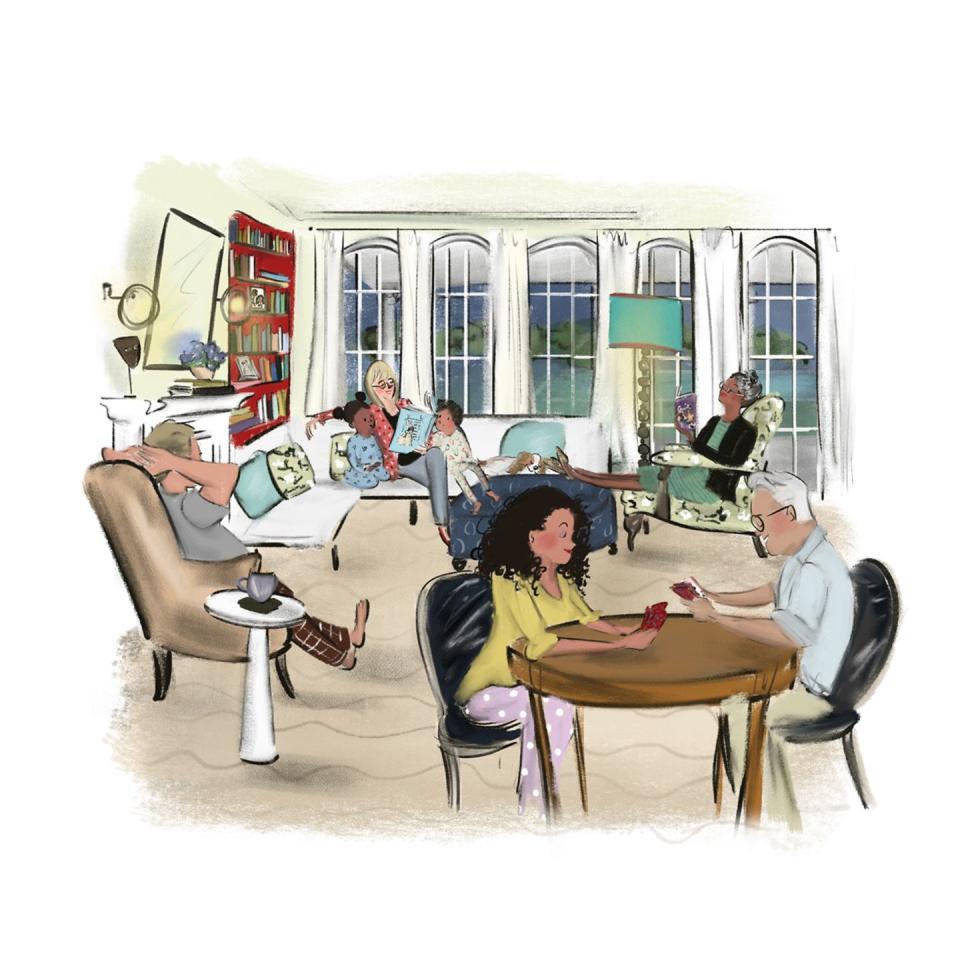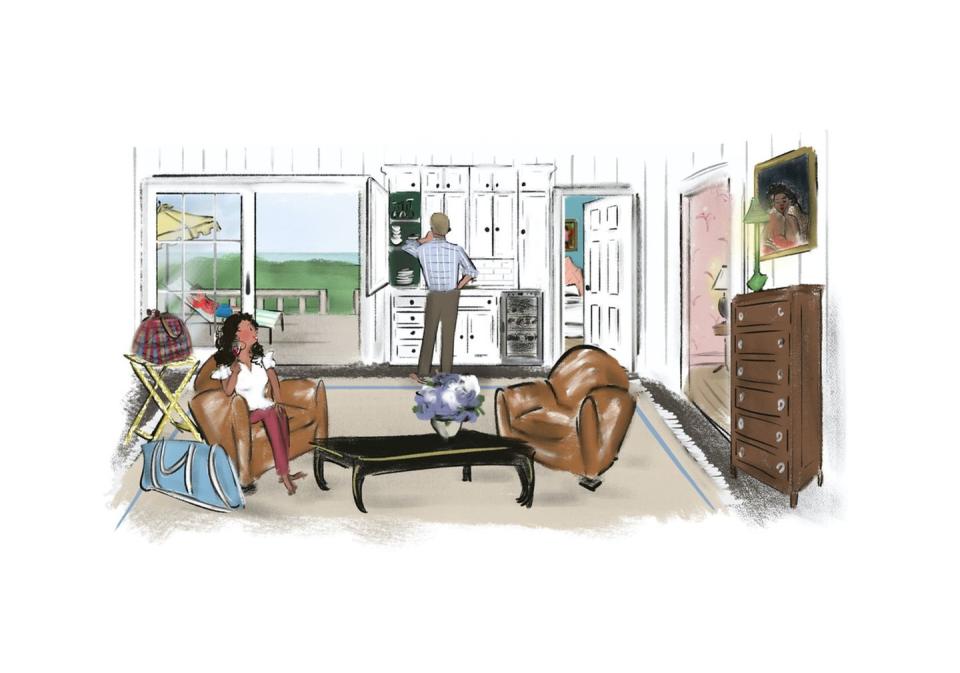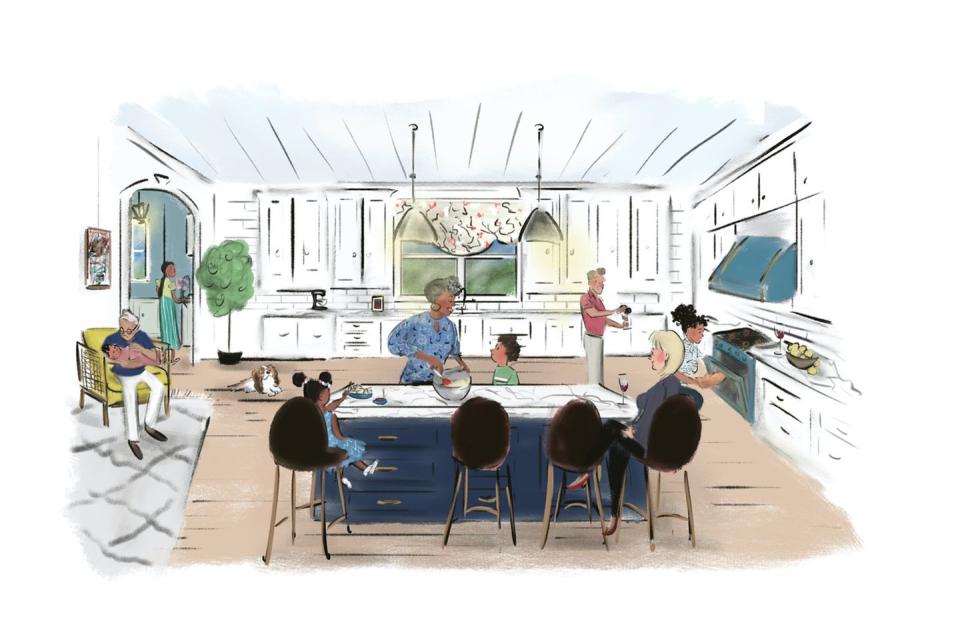Here’s What the Future of the American Vacation Home Looks Like

Long gone are the days of beach houses or ski chalets sitting stagnant until peak season—today’s homeowners are embracing similar levels of joie de vivre when it comes to visiting and decorating their holiday homes. In a post-pandemic world, we are all very aware that secondary retreats can spring into full-time use at any moment—so stocking them with luxe touches could be considered a sanity-saving measure. “The getaway is now the every day,” says New York designer Ellie Cullman of Cullman & Kravis Associates.
We surveyed multiple architects and designers on everything from the new vacation home must-haves to what we can expect to see in the coming years. Here’s what the future of the vacation home will look like, according to experts.
Vacation homes will be closer to primary residences.
Most designers report that second homes are now significantly closer to home, offering spontaneous drop-ins. “With COVID-19 people realized how important having an alternate refuge is,” says Chicago designer Alessandra Branca. So if your primary residence is in New York City, you might want to consider looking for a beach house in the Hamptons or a place in the Adirondacks (instead of, say, a condo in Palm Beach) for easier weekend trips. As many folks have flexible or remote work schedules post-pandemic, it can be a fun change of pace (and scenery) working from their vacation home a few days each month.
They’ll feature durable furnishings.

Part of creating a refuge is indulging in luxurious design, and increasingly some of the most opulent choices are also more than capable of going the distance in terms of heavy, long-term use. In our dizzyingly high-maintenance world, installing low-maintenance, durable options is key.
“Often these homes are in climates where at least one season is harsh—or near beautiful, but corrosive, salt sea air,” says Scott Sottile, partner at New York’s Ferguson & Shamamian Architects. “If the house is to provide a respite, you don’t want to be constantly worrying about either time or money for upkeep.”
For those reasons performance fabrics have taken over indoors. “In the past outdoor fabrics were left to the outdoors because they were scratchy and cabana stripe-y,” says Portland, Oregon, designer Max Humphrey. “I’m using almost 100 percent indoor-outdoor fabrics inside the home because they look and feel just as good as a traditional indoor fabric,” he says, citing bouclés, linens, and velvets that are now nearly indistinguishable from the real thing. “We suggest people invest in their living rooms or family rooms where there is the most traffic and lounging,” says New York designer Young Huh, who advises going full-throttle on your fabric budget. “Inexpensive upholstery can get lumpy very quickly.”
Smart technology will reign supreme.
Also required for extracurricular real estate holdings: smart systems galore, says Chicago architect Phillip Liederbach. Remote security and video systems are just the start. “Sensors on anything and everything that could leak are a must,” he says. (Sottile recommends choosing those that send alerts directly to the homeowners and placing them under appliances and sinks.)
One of Humphrey’s go-tos for getaway homes: motorized window treatments that allow you to close the house off remotely, even when you’re away on business across the world. But even in the age of iEverything, a human touch can be invaluable. “I always recommend a local caretaker who can stop by the house once a week or so when possible,” designer Elizabeth Cooper says. “A superstar woman I worked with prevented an entire ceiling from falling in because she noticed that a second floor toilet was running when the homeowners were away.”
Homeowners will continue to invest more in their outdoor spaces.

The pandemic made many of us were reminded that our backyards are retreats in their own right—and that trend is expanding way past raised vegetable gardens and store-bought fire pits. Secondary homes are increasingly designed with built-in outdoor spaces that add square footage to traditional footprints, and are equipped for year-round use.
“One of the great advancements in residential design over the last ten years has been movable glass walls, be it pocketing, folding, or stackable,” says Brevard, North Carolina architect Parker Platt. “When open, they allow you to seamlessly connect the indoors with the outdoors. And if you get that right, you can build a smaller house that is supported by larger outdoor living.”
Comfort reigns, even (and especially) al fresco, notes Huh, whose clients are asking for full outdoor kitchens and all-weather AV movie systems, should you want to binge “Julia” after dusk as fireflies dance around you. But these are more than summer flings. “In the Northeast, we added glazed panels and heat to screen porches originally designed for warm-weather use so that they continued to function through the winter,” says Roger Seifter, partner at Robert A.M. Stern Architects.
Sustainable living will become even more important.
For anyone with multiple homes, green choices are worth considering. “People used to talk about the provenance of a piece of art or vintage furnishing, but now it’s how sustainable or ethically sourced the building materials are,” Humphrey says.
Platt espouses photovoltaic arrays for electricity and geothermal heating and cooling (one benefit of the latter: unlike a cacophonous A/C unit, it makes all the racket of a gentle spring breeze). Most designers we polled agreed that native plantings are ideal at vacation retreats. They’ll more often flourish when homeowners or caretakers are away, even without watering—whereas a more manicured garden could rapidly become a scraggly, mewling thing, just in time for your next visit.
Second homes will incorporate longer-term guest quarters.

Designers’ clients are also currently requesting something that would have been almost unthinkable pre-COVID: guest suites that will encourage visitors to linger, rather than move on after the prescribed three days.
“The old wisdom that guests, like fish, go bad if kept too long doesn’t seem to apply anymore,” Seifter says. Making long-term visitors more palatable to guests and homeowners alike: private guest suites with separate entrances and tucked away coffee bars and fridges. “The bath and dressing area should rival—but not quite equal—those in the primary suite,” he says.
Cooper’s clients are seeking all the trappings of a high-end luxury hotel to pamper and delight visitors: Marvis toothpaste, fluffy-as-cotton-candy towels (obviously), and the types of luxury toiletries you’d be tempted to swipe…if you weren’t staying in your in-law’s place.
“Clients are definitely thinking about higher end toiletry products such as Aesop and Byredo, nice towels and linens, and room scents,” Huh says. It’s a bit like the golden rule: pamper others the way you’d like to be pampered. “We make our guest rooms full of crispy linens, romantic beds, good lighting, stacks of books and a whole list of small courtesies,” says Amanda Lindroth, who goes so far as to offer turndown service and ice water on night tables before bed. For Utah’s Kirsten Krason of House of Jade, fun surprises like de facto movie theaters are part of the package.
Service kitchens are making a comeback.

Another place no one is skimping? Cookspaces fitted with top shelf appliances, which often include service kitchens—a butler’s pantry here, a back kitchen to hide the Vitamix there. “Main kitchen areas are becoming more simplified and streamlined, while the scullery and pantry areas are increasingly large,” says Charleston, South Carolina architect Beau Clowney. “Steam ovens, speed ovens, refrigerator and ice drawers, and multiple dishwashers are usually required in a hard-working vacation house,” says Atlanta-based interior designer Phoebe Howard.
Vacation homes will be just as well appointed as primary residences.
And just as at primary homes, an investment in classic, timeless beauty speaks volumes. “We are telling our clients that the integrity of a home’s structure has to be as good as you can afford – do it once and make it right,” says Cullman, who added that the current supply chain woes and craftsman shortages necessitate getting it done properly from the get-go.
“One thing that we are noticing when it comes to second and third homes is that these once seasonal outposts are now being treated and appointed with very high-end amenities that were formerly reserved for primary residences,” Darryl Carter says. To name just one example: in bathrooms of vacation retreats, Lindroth often employs twinkling chandeliers, shirred fabric sconce shades and translucent quartz counters that are “just so pretty,” she says. Now that sounds like a vacation home we want to visit—and settle in for a while.
Want to know what else is trending for home and design? Read these next:
You Might Also Like

